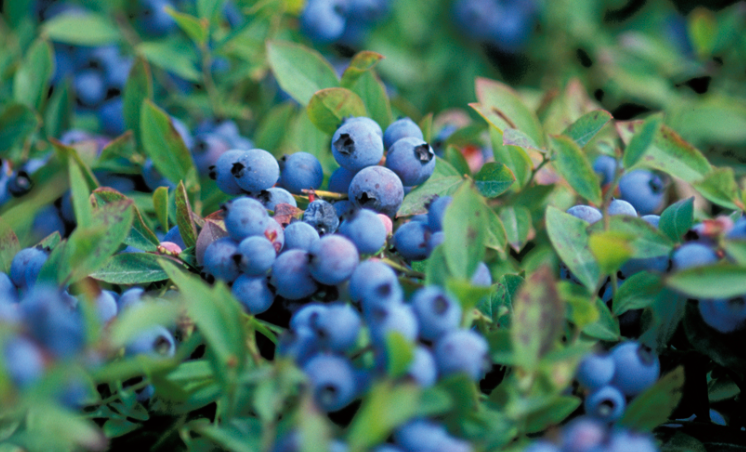Easy Ways To Maintain Nutrient Density In Our Diets As We Age
Written by Kitty Broihier, MS, RD, LD, Nutrition advisor and spokesperson for the Wild Blueberry Association of North America.
Did you ever hear an older person in your life say “I just don’t have an appetite” or “I rarely feel hungry anymore.” No, it’s not just in their heads. It’s a fact that as we age, our need for energy declines, along with our appetites. In general, older adults need less—and tend to eat less food overall—than younger adults. For many, this presents a situation of nutritional “mismatch” that can be problematic for health.
Declining appetite with age presents a nutrition challenge
Mother Nature created a nice pairing of decreased desire for food with declining energy needs as we age, until it comes to nutrient needs. While our energy (or caloric) needs decrease with age, our nutrient needs generally don’t – in fact, some are even higher. This translates to a challenging situation for many older adults which may result in quality issues for their overall diet.
Recent research in over 10,000 US adults with an average age of 73 found that, from 2001-2018, diet quality deteriorated significantly. Using data obtained from the nine National Health and Examination Surveys conducted during this period, the researchers compared participant data against the American Heart Association nutrition quality index. Based on those scores, they found that the proportion of older US adults with poor diet quality increased from about 51% to 61% during that time period. The percentage of older adults with ideal diet quality stayed the same at only about 1%. The researchers also found that consumption of whole fruits by adults this age decreased by nearly 51% over that time period.
Three ways that older adults can pack more nutrition into their diets
Keeping calories in an appropriate range while maintaining (or increasing) the nutrient content of the diet requires some attention and intention, but it doesn’t have to be difficult. Jacqueline B. Marcus, MS, RDN, FAND, founder of TasteOverTime, a website focused on providing resources and advice for “eating and drinking while aging tastefully,” points out that “In this study, older adults reduced their intake of fruits and vegetables, fish and whole grains, but these items are easier, more convenient and somewhat more economical than ever before.” Jacqueline provided three helpful strategies for boosting the nutrient density of an older (or any aged) person’s diet.
- Cultivate a smoothie habit: Not only are older people at higher risk for dehydration, they also can benefit from more fiber and more protein—all things that a moderately-sized smoothie can provide. Plus, smoothies are easy to consume (important for those with dentition or swallowing issues), can serve as a snack or a beverage, and are a breeze to prepare. Creating a wild blueberry-based smoothie each day also can deliver cognitive benefits, which researchers attribute to their high level of anthocyanin pigments and potent antioxidant effects. With twice the fiber of ordinary blueberries and a more intense blueberry taste, frozen wild blueberries are a convenient and simple smoothie addition that provide great flavor. Check out our wide variety of wild blueberry smoothie recipes.
- Look for healthy food items, such as produce, in convenient forms and package sizes: For older people, purchasing large quantities of produce or other fresh foods, even if the price is tempting, is often a set up for wasted food. Jacqueline recommends looking for smaller packages of nutritious foods, as well as heat-and-eat items for easy options. Of course, fresh produce is great but we recommend purchasing just a few pieces at a time if possible, and don’t overlook frozen and canned fruits and vegetables. Not only are frozen produce items (like wild blueberries!) convenient because they’re easy to take out just the right amount desired so there’s no waste, but they are also frozen when perfectly ripe, so nutrients are “locked in” at peak levels. To avoid unwanted added sugar, salt or fat, be sure to look for lower-salt or no-added-salt canned veggies, and plain, un-sugared, and un-sauced frozen items.
- Enhance food flavors with nutritious mix-ins: Experiencing a decrease in ability to taste and smell is common among older people. Increasing the flavor impact of nutritious foods not only boosts interest in eating and food enjoyment, but can also introduce added nutrients. Making food more colorful can help and all can be achieved by using some popular add-on ingredients like toppings, garnishes, and sauces. Consider trying some of the following easy ideas to help make healthy foods even more nutritious:
- Top yogurt, cottage cheese, and hot or cold cereal with a sprinkle of frozen wild blueberries (or berry mixture) for more color, texture, and health-promoting phytonutrients
- Add sliced hard-boiled eggs for more protein and color in your salads, sandwiches, and pasta dishes
- Eat meat and poultry with a fruit sauce made from fresh or frozen fruit. This goes a long way to enhance the appeal and flavor of pork, chicken, and turkey which can sometimes be less appetizing as people age
- Augment the savory flavors and nutrition content of soups and stews with ingredients like mushrooms, peas, and tomato paste
- Scatter chopped, unsalted nuts (toast them if you like) over cereals, cooked or canned fruit, and cooked vegetables. Ground nuts can be incorporated into sauces like pesto to use with pasta, over vegetables or as part of a dip
No matter how you spice up your meals, it’s so important to ensure you’re getting the necessary nutrients to fuel your body at every age. Need some recipe inspiration? We’ve got you covered.

